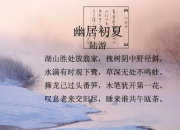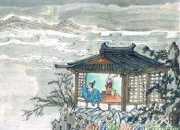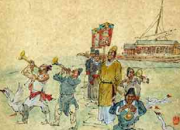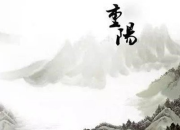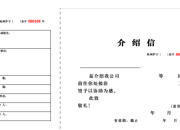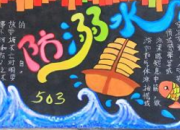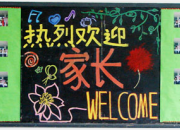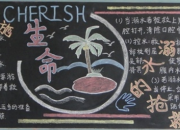十三陵的英语导游词
时间:2021-08-31十三陵的英语导游词
明十三陵,位于北京市昌平区境内天寿山南麓,距京城约50公里,总面积120多平方公里。下面是小编为你带来的'十三陵英文导游词,欢迎参考!
十三陵英文导游词
THE MING TOMBS
The Ming Tombs are 40 kilometers north of Beijing City on the southern slopes of Tianshou Mountain. They are the burial grounds of 13 Ming Dynasty emperors. In July 2003 the site was designated a world cultural heritage site by UNESCO.
Empress Xu died in the 5th year of Yongle (1407). Zhu Di sent
Zhao Hong, secretary of the Ministry of Rites and a geomancer----Liao Junqing along with many others to Beijing in search of an auspicious place for the tombs. It is said that this group of people first selected the area of Tu Jia Ying, which means slaughter-house, and as such, it couldn't be used as the burial ground. Next they selected the foot of Yangshan Mountain, Changping. However, since the surname of the emperor (Zhu) is a homophone for pig and because a village named 'wolf mouth ravine' was located there, they decided against using that area. Later, they found Yan-jiatai west of Beijing. Again, since 'Yanjia' was the homonym of the death of the emperor, it was also deemed unsuitable. It was not until the 7th year of Yongle (1409), that they finally chose the present Heavenly Longevity Mountain as their cemetery grounds.
The whole area covers 40 square kilometers. It has mountains to its east, west and north, and Dragon Mountain and Tiger Mountain are on either side of its southern entrance. The 13 tombs go from north to south. They are arranged in the manner of the Imperial Palace, with the administration area in the front and living quarters in the rear. In front of the tombs are divine passes, stone archways and steel towers. The Precious City and Ming Tower stand over the Underground Palace.
There were 16 emperors during the Ming Dynasty. Buried in the Ming tombs, are 13 Ming emperors and 23 empresses, as well as many concubines, princes, princesses and maids. The other 3 emperors, Emperor Zhu Yuanzhang, Zhu Yunwen and Zhu Qiyu are buried in other locations.
The founder of the Ming Dynasty, Zhu Yuanzhang, established his capital in present day Nanjing where he was buried after his death. His tomb is called Xiaoling (Tomb of Filial Piety).
The body of the second emperor of the Ming, Zhu Yunwen, is missing. Some said that he died in a fire, while others said that he went to a temple and became a monk. There is no final conclusion yet.
The seventh Ming Emperor Zhu Qiyu, was buried as a prince by his elder brother Zhu Qizhen at Jinshankou, a western suburb of Beijing, because in the Tumubao Upheaval, Emperor Zhu Qizhen became a captive and the younger brother of Zhu Qizhen. Zhu Qiyu was chosen as the new emperor, but later Zhu Qizhen was back and proclaimed his re-enthronement in the Seizing Gate Upheaval.
The Memorial Arch was built in the 19th year of Jiajing (1540) as a symbol of the Ming Tombs. It is 14 meters high and 28. 86 meters wide, and has 5 arches supported by 6 pillars with beautiful bas-relief carvings of lions, dragons and lotus flowers. The Memorial Arch is the biggest and the most exquisite stone arch preserved in the country today. The major designs of dragon and cloud decorations reflect the character of imperial architecture. In addition, it also demonstrates the skillful artistry of the Ming craftsmen.
The Big Palace Gate is the front gate of the Ming Tombs, and is more commonly known as Big Red Gate. Facing south, there are three arch entrances to the gate, the main inlet to the Ming Tombs. Flanking the gate are two stone tablets, inscribed with orders for the emperor, officials and other people to dismount, before entering into the tomb area. If they did not obey, they would be punished for their disrespect. The rules governing the Ming Tombs in the Ming Dynasty, stipulate that one who sneaks into the tomb area to pick firewood and break twigs would be flogged. Those who came to fetch dirt and stone would be beheaded. Those who entered arbitrarily into the tomb area would be flogged a hundred times.
The Tablet House was built in the 10th year of Xuande (1435), and stands about 10 meters high with two tiers of eaves. A huge tablet stands in the middle of the Tablet House. The front side bears an inscription by Emperor Renzong for Chengzu. The reverse side is a poem by Qing Emperor Qianlong recording in detail the conditions of the broken Changling, Yongling, Dingling and Xiling. On the east side is the record of expenditures for repairing the Ming Tombs by the Qing government. On the west side is an epitaph by Qing Emperor Jiaqing. It was written in the 9th year of Jiaqing (1804) describing the cause of the fall of the Ming Dynasty.
On the north side of the Tablet House, stands a group of stone carvings (36 in all). Behind the house, there are two stone pillars. Beyond the pillars are stone animals and other statues. Lions, Xie Zhi, camels, elephants, and Qi Lin horses .All of the animals are in two pairs. Two stand, while the other two kneel. It is followed by the statues of military officers, civil officials and officials of merit, four in each group. These stone animals and statues were made in the 10th year of Xuande (1435). They reflect the imperial power when he was alive and the imperial dignity after he was deceased. The animals and statues were created using whole blocks of stone weighing a couple of tons and each was delicately and masterfully carved.
Here stands Ling Xing Gate, also known as the unique Dragon and Phoenix Gate, with the meaning of the Gate of Heaven. The gate is pierced with six door leaves, attached to three archways. The top of the central section of the three archways is decorated with flames and precious pearl, so it is also known as the Flame Archway. To the north of the Dragon and Phoenix Gate there lays a seven-arch marble bridge, leading to the gate of Changling. To the east of the seven-arch bridge stands an old five-arch bridge, which was the original site of the seven-arch bridge.
Actually we are standing on the axle line of the Ming Tombs, otherwise known as the Sacred Way or the Tomb path. We passed the Memorial Arch, the Big Palace Gate, the Tablet House, Sacred Way, stone animals and statues, and Ling Xing Gate. This seven-kilometer long sacred pathway leads from south to north, all the way to the Gate of Changling.
Now, we are moving to Chang Ling. Changling is the first tomb built in the Ming Tombs area, covering 10 hectares and containing Emperor Zhu Di and his empress Xu.
Zhu Di (Chengzu) of the Ming Dynasty was the fourth son of the first Emperor Zhu Yuanzhang, born in 1360. Zhu Di was conferred the title of the prince of Yan in the 3rd year of Hongwu (1370). He was appointed at Beiping. After the death of Zhu Yuanzhang (the first Ming Emperor), Zhu Di used the pretext of eliminating evil officials at the side of Emperor Jianwen to lead an army expedition down south to Nanjing. He seized the throne in the 4th year of Jianwen (1402) and ascended the throne in June inside the Hall of Ancestral Worship in Nanjing. Zhu Di was an emperor of outstanding accomplishment in the Ming Dynasty. As soon as he became the prince of Yan, he led the generals out to battle. He had great achievements in calming down the north. After he took over his nephew's power and became the emperor, he still went out to battle throughout the country and consolidated the rule of the Ming Dynasty. He made the important decision to move the capital to Beijing. During the rule of Zhu Di, magnificent developments were made in the economy, culture and in diplomacy. In terms of culture, Zhu Di successively sent Grand Academician Xie Jin, Yan Guangxiao and others to compile the Yongle encyclopedia. The book has become the largest book ever complied in Chinese history. For expanding external exchanges and trade, Zhu Di selected eunuch Zheng He to lead a large fleet filled with precious gold, silver, silk and satins to sail to southeast Asia and Africa seven times in the early years of Yongle.




